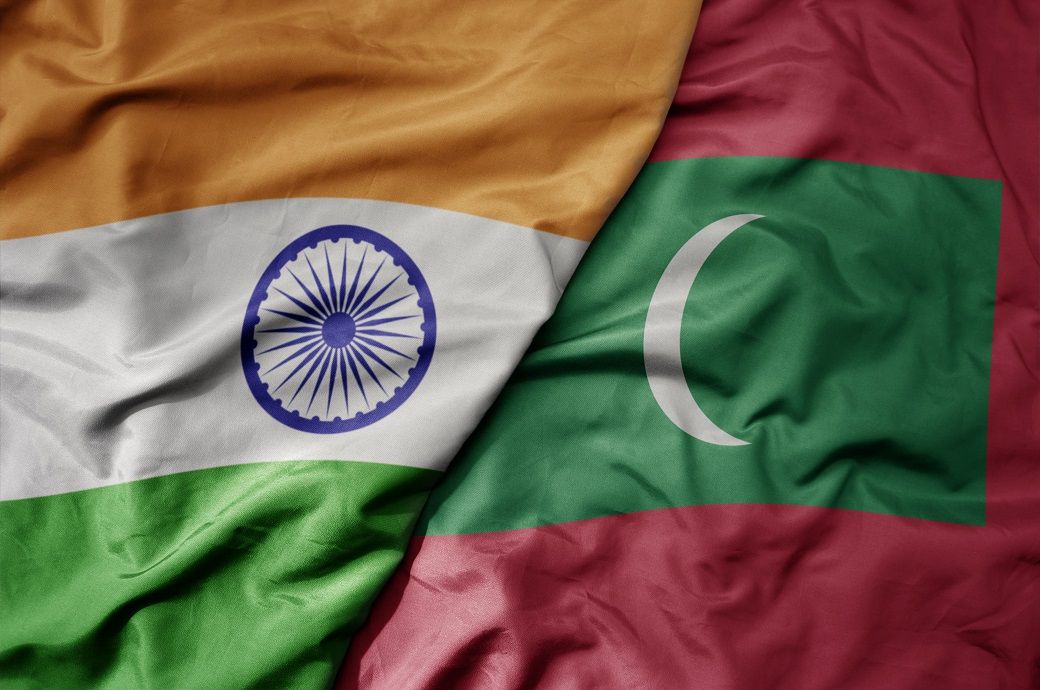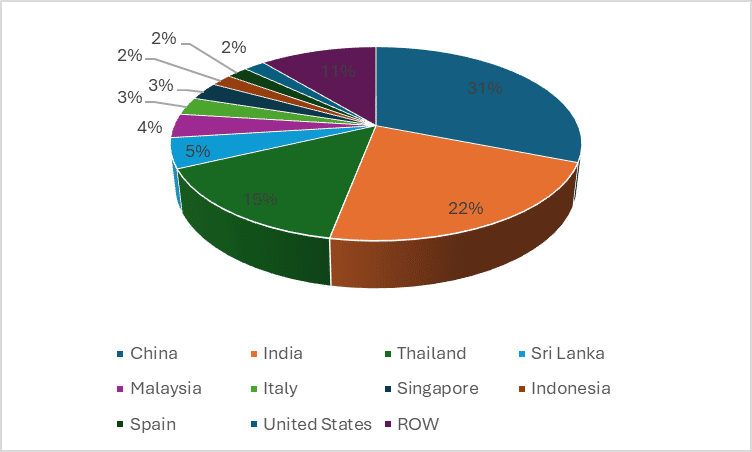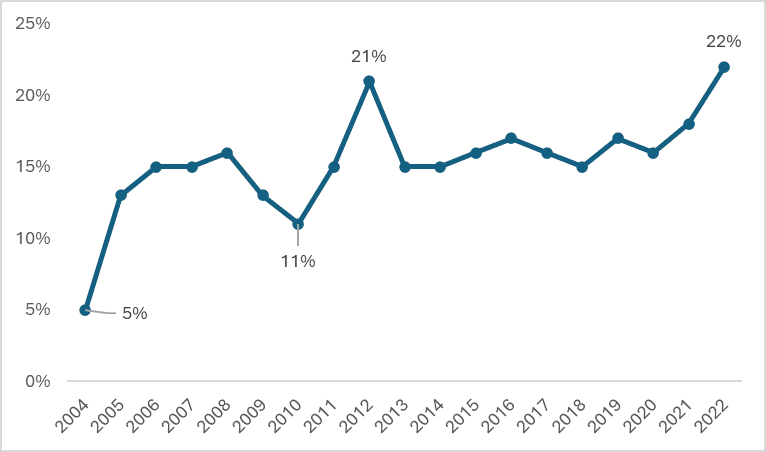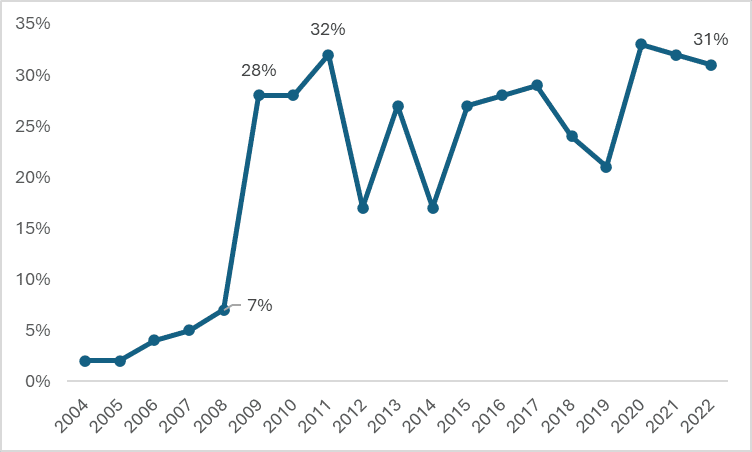
India’s trade with Maldives in textiles
Historically, India has been the second-largest trading partner in textiles for Maldives, next only to China. India holds a share of 22 per cent in Maldives's total textile imports. Over the years, along with an increase in the exports of minerals, machinery, base metals, and ceramic goods—which are the largest exports of India—textile exports to Maldives have also seen a drastic increase. According to an Invest India report on the India-Maldives bilateral trade, in the year 2021-2022, textile exports from India saw a jump of approximately 83 per cent. Thus, the huge jump in exports within a year makes the sector significant, in addition to the aforementioned categories.
Figure 1: Top countries' share in Maldives trade (in %)

Source: TexPro
Change in the trade patterns
India and Maldives have a close geographical proximity, which makes the nation import a lot of commodities like medicines and staple food from India. For Maldives, India is also important for medical tourism and the provision of necessary medicines.
When it comes to textiles, India exports carpets and textiles meant for industrial use to Maldives. The change in the Indian textile exports to Maldives has been huge which inched to a high of 21 per cent in 2012, followed by a jump of 22 per cent in the 2022. However, after the current diplomatic stir between the two nations, the trade may be affected when it comes to textiles as Maldives is seen moving closer to China. The per cent increase in China-Maldives textile trade is much higher, compared to Indian textile exports. As Maldives tends to move away from India in terms of trade, there is a higher probability of textile exports reducing in the year 2024. Maldives has planned to reduce the reliance on India for medical services and import of staple food as well. Even though the value of India's trade with Maldives is higher at $476 million as compared to Chinese trade of $451 million in 2022, the decision to reduce its reliance on India hints at a change in the direction in which the Maldivian trade can move.
Figure 2: Change in India-Maldives textile trade (in %)

Source: TexPro
Increasing links with China
On the other hand, Maldives already has China as its top trading partner. The total textile exports to Maldives from China have been increasing at a steady rate. The change in the overall textile trade is hovering between the range of 28 and 31 per cent as shown in Figure 3. A free trade agreement (FTA) was signed between the two nations in 2017, however, it failed to materialise due to internal reasons like the change in the government. If the FTA is materialised, there is a higher probability that the dependence on China can increase for textiles and other necessary merchandise. Maldives has 20 agreements with China which range from tourism to a strategic cooperation partnership. The warming up of Maldives to China raises a question—should all nations worry about the increasing links of Maldives with China?
Figure 3: Change in the China-Maldives textile trade (%)

Source: TexPro
Need to worry?
In this era of economic and geo-political warfare, where a country’s overdependence on the other is looked upon as a potential threat, the increasing dependence of the Maldives economy on China is a matter of concern. Already the country has a debt-to-GDP ratio of 124 per cent, which shows that the country is buried in a pile of debt. And the amount that it owes to China is a staggering 37 per cent of its total debt. With all the major organisations like the World Bank hinting towards the nation falling into a potential debt trap, it is high time for the nation to understand the potential threat.
The Maldives economy earns its major foreign exchange through tourism and the other portion is through the customs duty. However, if the FTA with China comes into effect, there are higher chances that the country will suffer as the customs revenue will take a hit. The world has already witnessed countries like Sri Lanka and Pakistan falling into the Chinese debt trap. So, the shift in the Maldives policy is a concern for the entire world.
ALCHEMPro News Desk (KL)
Receive daily prices and market insights straight to your inbox. Subscribe to AlchemPro Weekly!